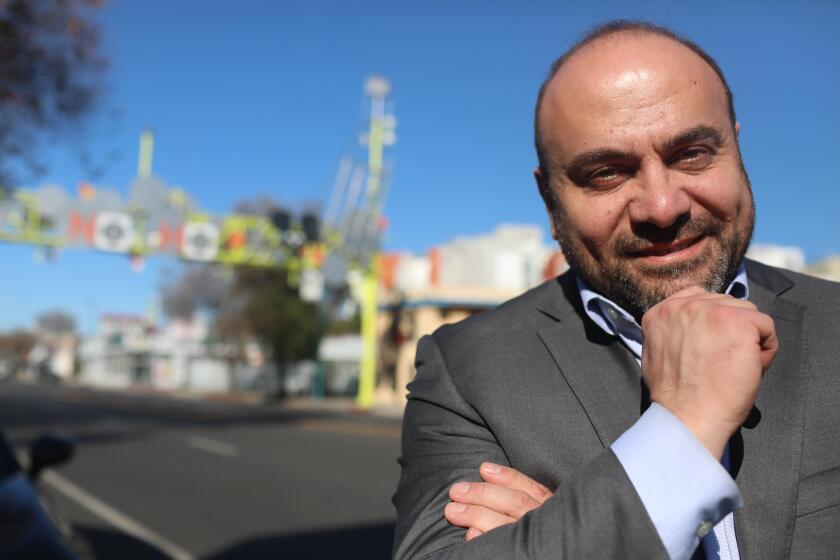L.A. must act on construction within fault zones
Living in Southern California means accepting that the ground below is riddled with earthquake fault lines. But it doesn’t mean we should ignore them. That’s why it is so disturbing that the city of Los Angeles has consistently failed to make developers do the extensive trench digging that experts recommend before construction near the Hollywood and Santa Monica faults — both of which have been designated “active surface faults” that, if they ruptured, could break apart a building’s foundation.
In the last decade, more than a dozen projects have been approved and built — or are under construction — near those faults without specialized underground testing first. A few other projects, approved but not under construction yet, have drawn scrutiny from community activists and geologists, prompting developers to promise more substantial testing and, in at least one case, the city to order it.
Under California law, the state geologist is supposed to map active surface faults and set safety zones of 500 feet on either side. Once those maps are released, the law requires developers who want to build within the zones to do extensive testing — either trench digging or other underground investigation — to determine whether their proposed structures straddle a fault line. The state usually prohibits building within 50 feet of a fault line.
Unfortunately, budget cutbacks have kept the state from mapping all the fault lines — which leaves cities on their own to determine what fault maps to use and what seismic reports to accept from developers. But there’s no reason that cities, including Los Angeles, can’t use the latest maps from academic geologists to set 500-foot zones along fault lines and require developers seeking to build in those zones to do sensible testing, especially after recent news reports showed that some current projects would perhaps not have been approved had the state maps been completed and the state law enforced.
To their credit, city officials have taken the first steps to deal with existing buildings that are deemed vulnerable. They are looking into compiling databases of concrete and so-called soft-story wooden buildings that may need retrofitting. Wouldn’t it also be a good idea to stop approving any new projects that might turn out to be particularly vulnerable to earthquake destruction?
The California Geological Survey has mapped about 550 faults across the state since 1972. (Yes, the San Andreas fault is mapped.) The agency has 300 more to do — on a budget that is a third of what it was in 2001. It hopes to finish the Hollywood map this year. Then, it wants to start on Santa Monica, but the state geologist warns that funds for mapping will dry up after June. No city should wait for the state to finish before putting stricter regulations into place.
More to Read
A cure for the common opinion
Get thought-provoking perspectives with our weekly newsletter.
You may occasionally receive promotional content from the Los Angeles Times.










